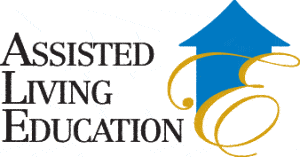Effects of Medications on the Senior Body: Part II
In our previous blog, we discussed some of the effects of medications on the senior body, with regard to how drugs are effectively processed throughout the body systems on a cellular level.
Because of age-related changes, elderly people are more susceptible to the effects of drugs. In our last blog, we reviewed how pharmacodynamics and pharmacokinetics are concerns with how the body interacts with and metabolizes a drug. Many drugs tend to stay in the older body for prolonged periods as well. Though some of the side effects discussed in this blog may seem less serious or even inconsequential, because a drug can have a larger or stronger effect on the senior body, these symptoms can actually cause undue stress or even harm to their body.
Assisted Living Education continues the discussion of drug-related side effects in the elderly, finishing up our two-part series on this topic.
Adverse Drug Reaction (ADR)
A serious, negative response to a drug is called an adverse drug reaction or ADR. The World Health Organization (WHO) defines an ADR as “A response to a drug which is noxious or unintended, and which occurs at doses normally used in a man for the prophylaxis, diagnosis, or therapy of disease, or for the modification of physiological function.” This is considered an ‘injury’ from taking medications, and can be from a single dosage or a prolonged exposure to a drug.
Sometimes the term Adverse Drug Event (ADE) is also used, but to clarify, ADE encompasses a broader definition including any injury incurred while the drug was administered, whether or not the drug was identified as the cause of the injury or not. An ADR identifies the drug as the direct cause, and is a type of ADE.
ADRs can be further classified into categories:
Type A: Most ADRs (about 80%+) fall into this category and are expected to some degree due to the drug’s known pharmacological properties. The drug may have a low therapeutic index (TI), meaning that the drug’s efficacy is quite close to the threshold of the drug’s toxicity. A common example used is warfarin. The drug is specifically designed and prescribed as an anticoagulant; however, some individuals may respond too well and experience excessive bleeding.
Type B: These are less common and unpredictable. The nature of these reactions suggests that they are more individual-specific, such as a hypersensitivity or an allergy.
Some literature lists additional subtypes, but check with your individual assisted living facility for their protocol, if necessary, in classifying ADRs.
Manifestations of Adverse Effects
Reviewing a more basic definition, Merck Manual describes adverse drug effects as any that are “unwanted, uncomfortable, or dangerous.”
Some of the more common manifestations of adverse effects are oversedation, constipation, confusion, hallucinations, falls, and bleeding. As we mentioned in our previous blog post, many of these problems are due to overdosage, underdosage, and other drug interactions, since many elderly residents are on multiple medication regimens.
There are certain classes of drugs in particular that are frequently involved with elderly ADR cases. Merck Manual lists antipsychotics, anticoagulants, antiplatelet agents, hypoglycemic drugs, antidepressants, and sedative-hypnotics as common culprits of ADRs.
Additionally, some medications are also highly discouraged for use by elderly residents, due to their side effects or common presentation of symptoms. For example, “first-generation antihistamines” including brompheniramine (found in some Dimetapp and Robitussin Allergy & Cough) are suggested as ones to avoid because of the negative effects they wreak on the elderly body, either immediately or cumulatively. However, 2nd and 3rd generation antihistamines, like the popular Claritin and Aleve, tend to be safer for elderly residents**.
Close monitoring of residents’ physiological mechanisms, disposition, and temperament are especially important during periods when a new medication or change is introduced to the resident.
**Please note that ANY change or deviation from an already-prescribed health care regimen, whether it’s the addition or removal of a prescribed medication, an OTC drug/medication, nutrition supplement, diet-related, or therapy-related change must be authorized through the appropriate channels (the resident’s personal/attending physician/s, dietician, etc.), as well as communicated to anyone involved in the resident’s care. Please refer to your specific facility’s guide for proper protocol on these types of procedures.
Prevention
Adverse effects from medications are a risk factor with any patient, but again, the elderly context is a much more complicated situation. An estimated 90% of elderly ADR cases are thought to be preventable, versus 24% of younger ADR cases. Hospitalization rates are also 4 times higher at 17% over 4% in younger patients.
As we mentioned in Part I of this series, the best way to prevent much of these adverse effects is through careful resident-monitoring and open, effective communication. Any authorized changes must be updated with other health care professionals or family involved in the resident’s immediate care.
Getting to know your residents and their ‘baseline’ dispositions, conditions, and behaviors are crucial for detecting any changes that might suggest an adverse drug reaction or even an acute medical event, which could have a subtle or unassuming presentation to the untrained or unfamiliar eye.
These seemingly simple practices can have a profound effect in terms of resident and individual care, as well as sharpening your own professional skills and approach.
Assisted Living Education
Assisted Living Education is a premier source for education, resources, and certifications in the industry. Our popular services include RCFE Certification, Staff Training, continuing education, and other Assisted Living Education products or online coursework. Explore our website, or reach out to us via our contact page for direct inquiries.



